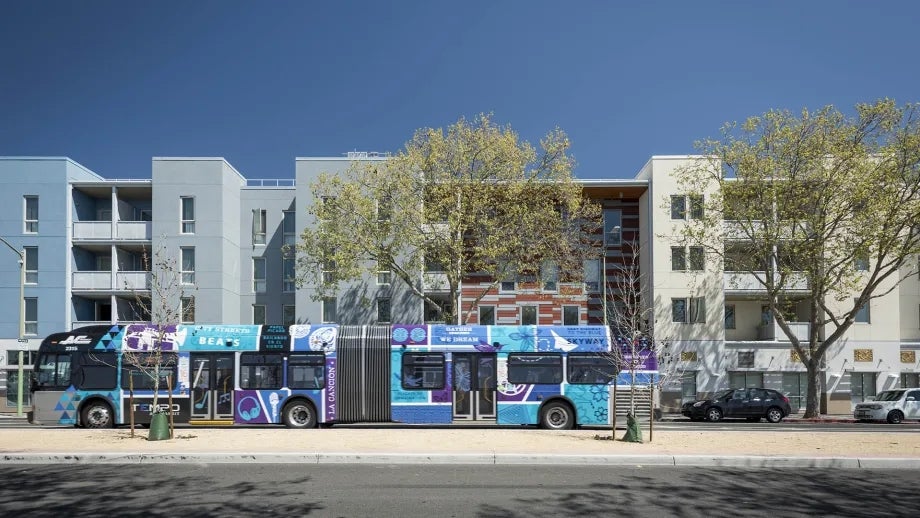New Budget Agreement Gives Big Boost to Transportation, Housing
California's current fiscal strength is poised to pay big dividends for transportation and housing investments around the Bay Area and across the state. The $300 billion-plus budget agreement announced Wednesday by state legislative leaders for the upcoming 2022-23 fiscal year directs more than $10 billion in projected surplus funds to advance a range of transportation priorities plus an additional $1.6 billion to help meet many of the state's longstanding housing affordability challenges. Gov. Newsom is expected to sign the budget into law by the end of this month.
"The Legislature has come together on a budget agreement that will truly put California’s wealth to work for all," said East Bay state Sen. Nancy Skinner, who chairs the Senate Budget and Fiscal Review Committee.
The agreement's $10.9 billion transportation package includes new investments in public transit, freight movement, bicycle and pedestrian improvements, and climate adaptation projects. The budget agreement commits roughly half of this money for investment in the new fiscal year that begins July 1, with the remaining half to be distributed over the following three years.
Among the additional housing investments in the new budget agreement are $700 million to complete construction financing packages for new projects that already are fully approved and entitled; $200 million for a new Community Anti-Displacement Acquisition Program to help keep lower-income families in their existing homes; $350 million for the CalHOME program that provides grants to public agencies and nonprofit organizations for assistance to first-time homebuyers and for rehabilitation assistance; $50 million for down-payment assistance to first-time homebuyers; $100 million for the Joe Serna, Jr. Farmworker Housing program; $50 million to help finance the construction of more accessory dwelling units (ADUs); and $150 million over two years to continue the Veteran Housing and Homelessness Prevention program established in 2014 by Proposition 41.
"When spending plans are responsible and include robust reserves, we can plan for the future," commented Assembly Budget Committee chair Phil Ting, whose district includes parts of San Francisco and northern San Mateo County. "Our budget agreement not only addresses the critical needs of today by supporting residents and small businesses still struggling from the pandemic, but it also ensures our state remains an economic force for generations to come with one-time infrastructure investments."
Using state budget dollars to maintain, modernize and extend California’s transit networks also makes the most of federal money, as each state dollar qualifies California transit agencies for additional funds from federal programs. In the Bay Area, the Legislature's new budget deal could help fill critical funding gaps facing such high-priority projects as the ongoing electrification of the Caltrain corridor; the BART extension from Berryessa through downtown San Jose to Santa Clara; upgrades to BART’s core to improve reliability and speed through the transbay tube. These are all projects with existing federal commitments at risk without supplemental funding.
Caltrain's nearly complete electrification project is the first U.S. initiative of its kind in decades, designed to improve the customer experience, increase train service, set the framework for California’s High Speed Rail network and help the state meet its ambitious climate goals. The six-mile BART extension in Silicon Valley will be the largest single public infrastructure project ever constructed in Santa Clara County, creating unprecedented regional connectivity, speeding travel times, reducing transfers, and helping make the most of future High-Speed Rail.
BART’s Transbay Core Capacity project will accommodate a 30 percent increase in train frequency between San Francisco and the East Bay. The project includes additional railcars, a new communications-based train control system, a new rail storage yard and additional traction power substations to make more more frequent service feasible.
The new state funds could help accelerate two other regional transit priorities pursuing federal funds: extending the Caltrain corridor from its current San Francisco terminus at Fourth and King streets to the downtown Salesforce Transit Center; and Valley Link, a new commuter rail project that aims to connect the existing Dublin/Pleasanton BART Station to San Joaquin County with an initial station in Mountain House. The new budget deal also may help the Bay Area meet the herculean task of converting its existing diesel bus fleet to zero-emission vehicles by 2040, especially if items like facilities upgrades and fueling/charging infrastructure — as well as new buses — are clearly made eligible for funding.


Submit your comment
In order to receive a reply to your comment, please provide an email address.